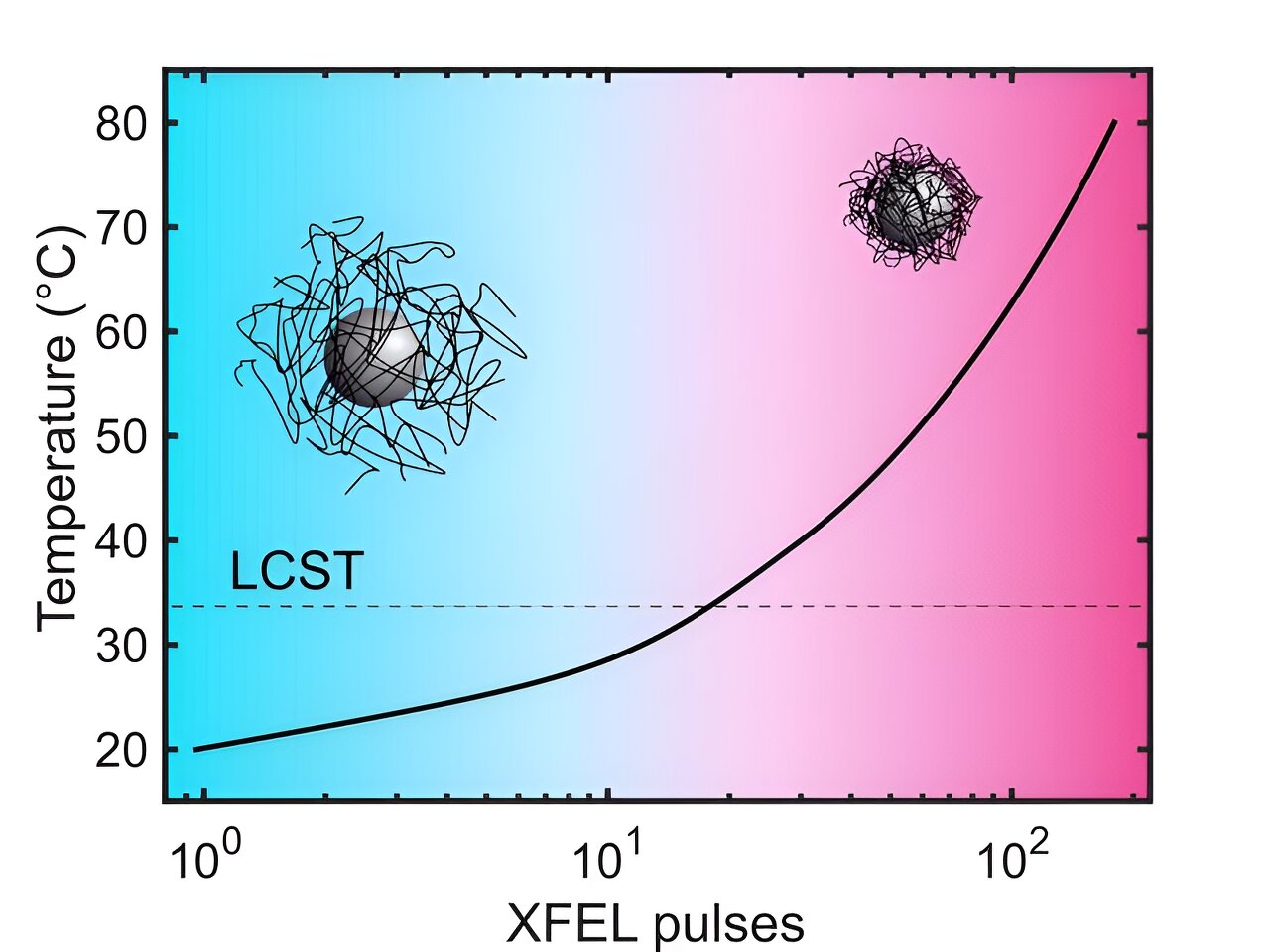An international team at the world’s largest X-ray laser European XFEL at Schenefeld near Hamburg has scrutinized the properties of an important nanogel that is often used in medicine to release drugs in a targeted and controlled manner at the desired location in a patient’s body. The team has now published the results in the journal Science Advances.
The researchers investigated the temperature-induced swelling and collapsing of the polymer poly-N-isopropylacrylamide (PNIPAm) at European XFEL at Schenefeld near Hamburg. Due to its dynamic changes, PNIPAm is frequently used in medicine, e.g. for drug delivery, tissue engineering or sensorics.
PNIPAm is typically dissolved in water. Above a certain temperature, the so-called lower critical solution temperature (LCST), which is around 32 °C, it changes from a hydrophilic, water-loving state to a hydrophobic, water-repellent state. As a consequence, nanogel particles, as investigated by Lehmkühler and co-workers, rapidly change their size above that temperature by expelling water.
This feature is useful for a variety of applications, including the controlled release of drugs in a patient’s body, as a model system for proteins and in tissue engineering, the cultivation of organic tissue for medical applications, or as bio-compatible temperature sensors.
However, it has been very difficult so far to watch these rapid phase transitions experimentally, and therefore to optimize them for different applications. Therefore, the precise characterization of the kinetics of the changes of the PNIPAm polymer with temperature is still a lively research topic.
Now, the fast sequence of X-ray pulses from the European XFEL have enabled researchers to investigate the rapid, temperature-dependent changes in the PNIPAm nanogel using a technique called X-ray Photon Correlation Spectroscopy (XPCS).
“Due to the high repetition rate of the European XFEL, we can perform these measurements with high enough time resolution to follow the structure and motion of the nanogels,” says Johannes Möller, Instrument Scientist at the Materials Imaging and Dynamics (MID) instrument of European XFEL. The researchers studied particles of about 100 nanometer size. The X-ray pulses were used both to heat the nanoparticles and to measure their structural changes via their dynamics, i.e. their movement in the surrounding water.
“With the help of the data obtained at the European XFEL, we have now been able to gain a better understanding of the swelling and collapsing of the polymer,” says Felix Lehmkühler, one of the leaders of the team.
“In contrast to previous studies, that were limited to indirect measurements of the kinetics of swelling or collapsing, we found that the nanogel shrinks significantly faster in the range of 100 nanoseconds, but takes two to three orders of magnitude longer to swell,” explains Lehmkühler. The results could help researchers to further understand and improve the features of the polymer for different applications, such as the development of more efficient drug delivery systems.
More information:
Francesco Dallari et al, Real-time swelling-collapse kinetics of nanogels driven by XFEL pulses, Science Advances (2024). DOI: 10.1126/sciadv.adm7876
Provided by
European XFEL GmbH
Citation:
European XFEL elicits secrets from an important nanogel (2024, April 19)
retrieved 19 April 2024
from https://phys.org/news/2024-04-european-xfel-elicits-secrets-important.html
This document is subject to copyright. Apart from any fair dealing for the purpose of private study or research, no
part may be reproduced without the written permission. The content is provided for information purposes only.

